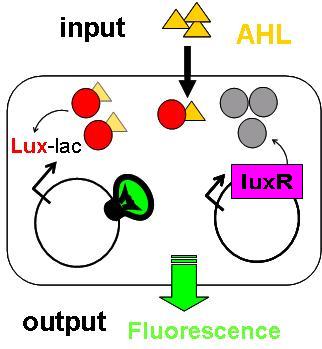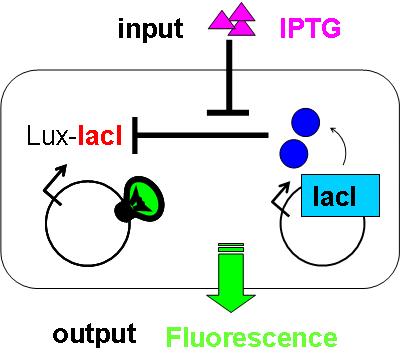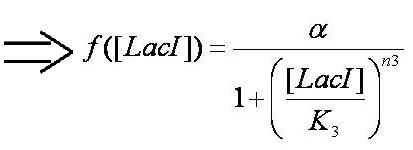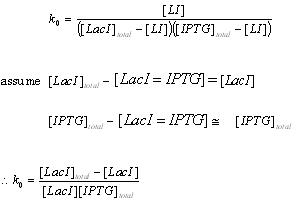Tokyo/Hill function fitting
From 2007.igem.org
(Difference between revisions)
| Line 22: | Line 22: | ||
<br>[[Image:expression6-7.JPG|300px|none|thumb|Ex.6.6]] | <br>[[Image:expression6-7.JPG|300px|none|thumb|Ex.6.6]] | ||
<br>[[Image:expression6-10-3.JPG|300px|none|thumb|Ex.6.7]] | <br>[[Image:expression6-10-3.JPG|300px|none|thumb|Ex.6.7]] | ||
| + | <br>However, the amount of LacI cannot be actually measured.So,we used the inducer IPTG to estimate the Hill function for LacI. | ||
| - | |||
| Line 32: | Line 32: | ||
<br>[[Image:expression6-8.JPG|300px|]] | <br>[[Image:expression6-8.JPG|300px|]] | ||
<br>[[Image:expression6-9.JPG|300px|]] | <br>[[Image:expression6-9.JPG|300px|]] | ||
| + | <br>[[Image:expression6-2.JPG|300px|]] | ||
Revision as of 04:20, 25 October 2007
<ヒル関数の導出>
Deviation of Hill function
1.Hill function for the activator AHL
Without the repression by LacI( [LacI]=0 ), Ex.6.1 was described as
Therefore, in the steady state the Hill function for the activator AHL was given as
2.Hill function for the repressor LacI
When the concentration of AHL was assumed to be infinity, Ex.6.1 was described as
Therefore, in the steady state the Hill function for the repressor LacI was given as
However, the amount of LacI cannot be actually measured.So,we used the inducer IPTG to estimate the Hill function for LacI.











